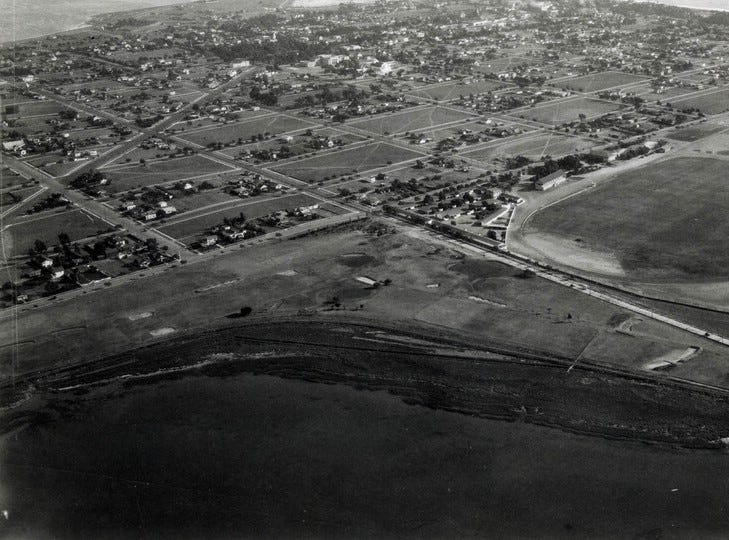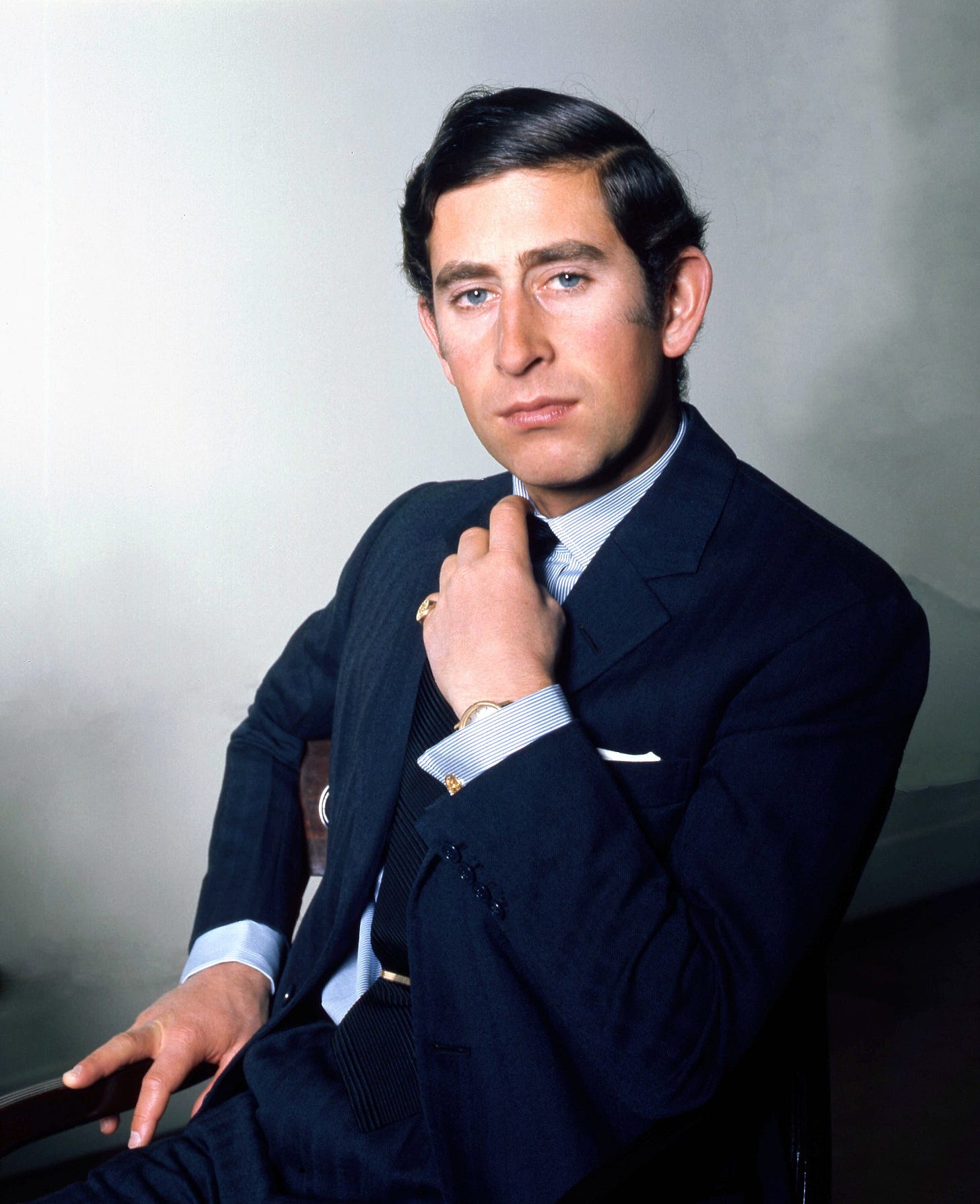March 4, 1954
On the northeast corner of Coronado, 744 housing units were taken over from the federal government. The property was worth an estimated $2,232,000 and with an estimated $100,000 profit yearly, a large part of the economy at that time. Mayor Lloyd Harmon gave federal agents a check for $17,094 to cover prorated taxes and supplies at the housing warehouse. The property transfer to the city by the federal government was made possible by the 1950 Housing Act, a measure permitting transfers of housing to cities without cost to the municipalities. The housing units’ tenants were Navy personnel and defense workers.
March 8, 1919
It was announced that Rockwell Field, named America's greatest flying school, would be open to the public every Tuesday from 9 a.m. to noon until further notice. Visitors were allowed wide latitude in inspecting the flying academy and permitted to see all types of military aircraft in action.
March 10, 1999
The Coronado City Council decided to raise the Silver Strand’s speed limit to 65 mph to keep speeding in check. Raising the speed limit from 60 to 65 mph allowed police officers to use radar to enforce the speed limit. In a recent survey, “top speeds indicated were off the charts at 92, 94 miles an hour,” said Coronado Police Chief Bob Hutton. “The presence and enforceability to use radar will slow many other drivers down,” Hutton said.
March 10, 2004
The Navy said NAS North Island was not suitable for joint military/civilian operations in conjunction with Lindbergh Field. North Island was one of seven sites considered for airport operations by the San Diego County Regional Airport Authority, which operated Lindbergh Field at the time. The Navy’s objections were shared by the Coronado City Council, which informed San Diego's Congressional delegation that it supported the Navy in opposing joint use for North Island.

March 16, 1944
Construction work on the Naval Air Station expansion project west of Alameda Boulevard was in progress and preparations for filling in Spanish Bight were also going forward. The development program was reported to cost approximately $3,600,000 and would cover 82 acres. New buildings, including quarters for approximately 5,000 enlisted personnel and 500 officers, a mess hall, dispensary, ship's service, and administration building were planned for much of the land north of Fourth Street.
March 17, 1949
The self-service Coronado Half-Hour Laundry at 937 Orange Ave. opened its doors with 20 Westinghouse laundromat units, two extractors and two dryers, a 300-gallon hot water tank and water softening equipment to handle 800 washes. Starching and pre-wash facilities were also available, and parking was provided at the rear of the building. Business hours were 8 a.m. to 8 p.m. weekdays and 8 a.m. to 5 p.m. Saturdays.
March 22, 1919
A concerned citizen brought up the need for a comfort station somewhere in the business district, near the Hotel Del. Hundreds of people were coming to Coronado and the need for restrooms was intruding on businesses. In many cases women with children would knock on the door of private homes and were accommodated.
March 24, 1949
Hilo Hattie, Hawaii’s singing and hula comedienne, whose singing and dancing career started at the age of 3, was scheduled to entertain in Hotel del Coronado’s Circus Room. She came into fame while singing at the Royal Hawaiian Hotel with the girls’ glee club. Hilo Hattie had been performing throughout the West Coast states and Canada. Some of her stops included the Paramount Theatre in Los Angeles; St. Francis Hotel in San Francisco; and the Roosevelt Hotel in Hollywood.
March 23, 1964
An R-6 zone status was approved unanimously by the Planning Commission for 37 acres of undeveloped land on the ocean front south of Hotel del Coronado. The land was owned by the HDC Corp., whose president was Larry Lawrence. An R-6 zone was new to Coronado, created to give the same conditions as a multiple family residential R-4 zone, with the added 150-foot height limit, which can run to 15 stories. The zone also permitted stores and restaurants. The application to the city provided by the developers said the city “will benefit by a broader tax on high rise buildings.”
March 27, 1929
Two Coronadans were badly injured by a falling bomb on the Silver Strand. Frank Grover, an employee at Hotel del Coronado, and Jeannette Ross were motoring down the Strand toward Imperial Beach mid-morning when a bomb dropped from a plane. The bomb struck the ground about five feet from the pavement by side of their car, sending pieces flying into their car. Badly cut by shrapnel, they were brought to the Coronado Emergency Hospital for treatment.
March 28, 1891
At the close of a citizens’ meeting, the following resolution was introduced and adopted: “Whereas, Many shade trees have been and are to be removed from the streets and avenues of Coronado for various reasons, be it resolved that we, citizens of Coronado, most strenuously object to the further removal of shade trees unless for good and sufficient cause.”
March 28, 1974
Prince Charles came to Coronado and spent some free time learning to surf. With little fanfare, a borrowed wetsuit and board, the Prince of Wales took to the waves near the North Island fence. He was accompanied by a husky Scottish bodyguard reported to be a former boxing champion with a knowledge of karate. Bob Duryea, owner of DuRay’s Surf Boards, lent a surfboard to the prince and coached him for nearly two hours. “He was a heck of a nice guy,” Duryea said in a newspaper report. “He was really stoked to go surfing.” Observers commented that the superbly mannered 25-year-old Royal Navy Lieutenant was deeply tanned, in excellent physical condition and seemingly impervious to the cold. Someone mentioned that the Hotel del Coronado had the Prince of Wales Grille, to which he replied facetiously, “Do you think I could get a free drink there?” The prince said, “I really would like to pop over there. I wish I had the time,” bypassing The Del on his visit.
March 30, 1944
Col. Antonio Cardenas, an officer of the Mexican Air Force, arrived in San Diego to assume command of a Mexican air squadron operating with the U.S. Fleet Air Force at North Island. The tall, handsome 39-year-old officer flew from Mexico City. Mexican airmen were temporarily stationed at North Island from the Second Military Zone of Mexico and were attached to a regular operational dive-bombing squadron participating in routine tactical exercises. After the airmen completed their mission, they returned to Mexico to disseminate their knowledge among other officers and men of the Mexican Air Force.
March 31, 1949
The sale of property lots in the Bayview Estates was authorized by the California Real Estate Commission. The subdivision included 28 lots between First Street, San Diego Bay and D and I avenues. The lots varied in size from 8,000 to 25,000 square feet including area to the mean high-tide line. Bay frontage varied from 62 to 80 feet. The price range on the individual lots ranged from $6,000 to $7,250.
March 31, 1994
Coronado welcomed President Bill Clinton and the first family to town. San Diegans flocked by the hundreds to Ocean Boulevard hoping to catch a glimpse of the president, Hillary Clinton and their daughter, Chelsea. More than 60 press representatives were staying at The Del for the week, along with dozens of FBI and Secret Service agents.
Everything from T-shirts that read “Hi Bill,” to stuffed cat dolls dressed in red, white and blue outfits — in honor of “first cat” Socks — were prominently displayed in retailers’ windows. Members of the police department, including reserve officers, worked overtime to accommodate demands of a presidential visit.
March 31, 1999
Marco Palumbo and his family, who brought generations-old Italian recipes to Coronado since 1957, closed their beloved Marco’s Ristorante after 40 years in business. The restaurant was in the historical Bank of Commerce building, at 1100 Orange Ave., which changed ownership. The new owner, Don Budinger, planned to restore the building to its original status.





